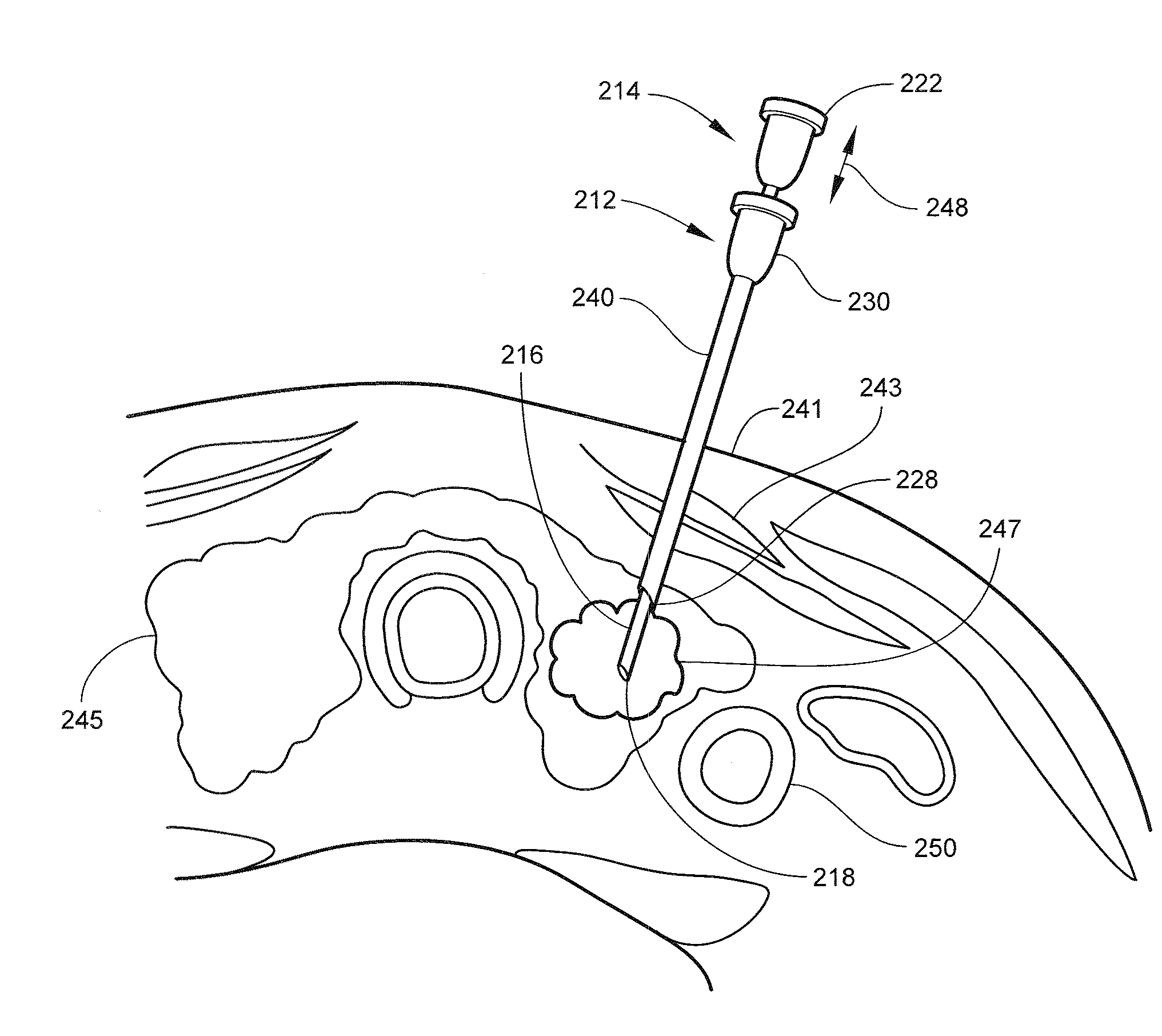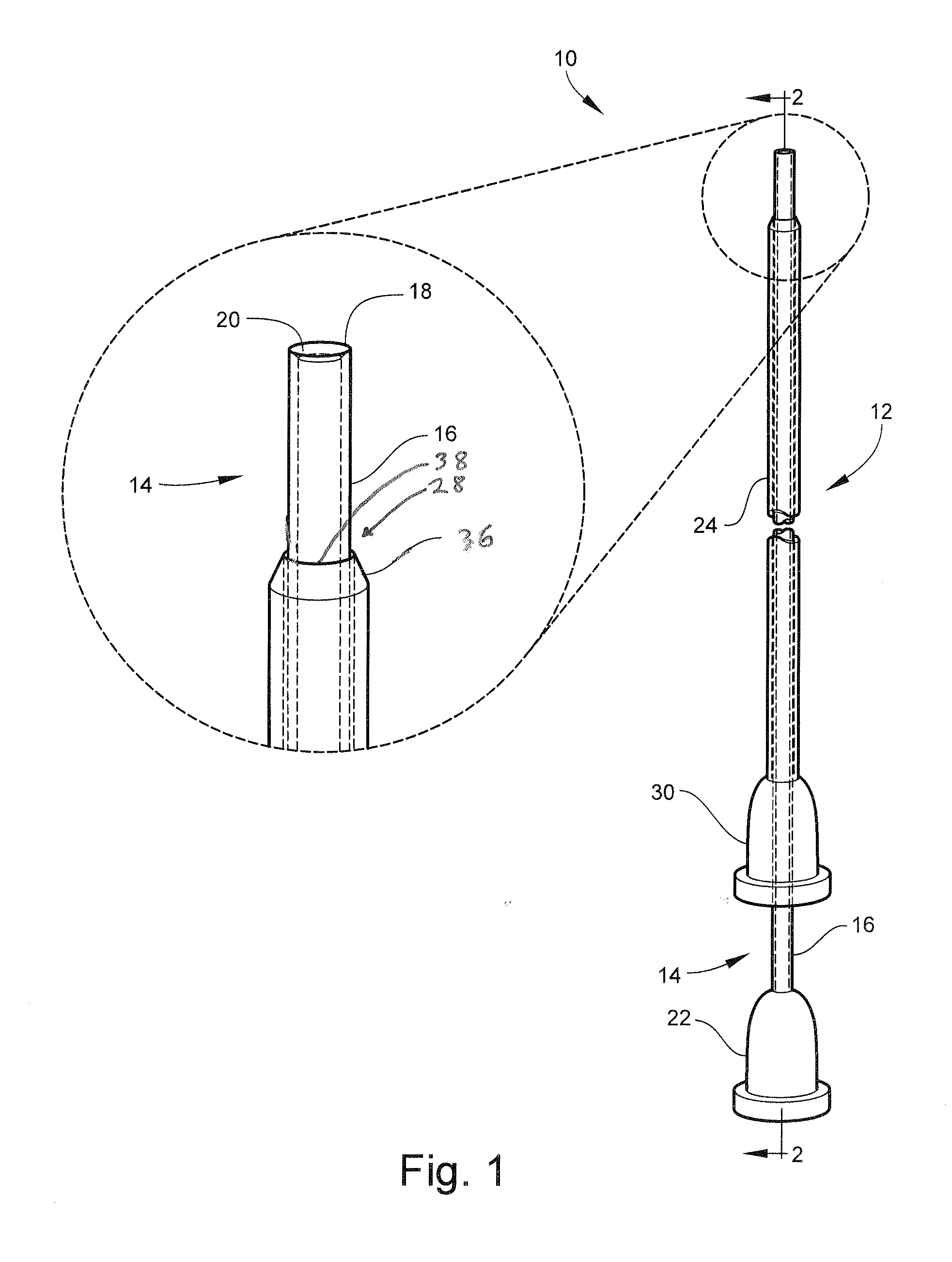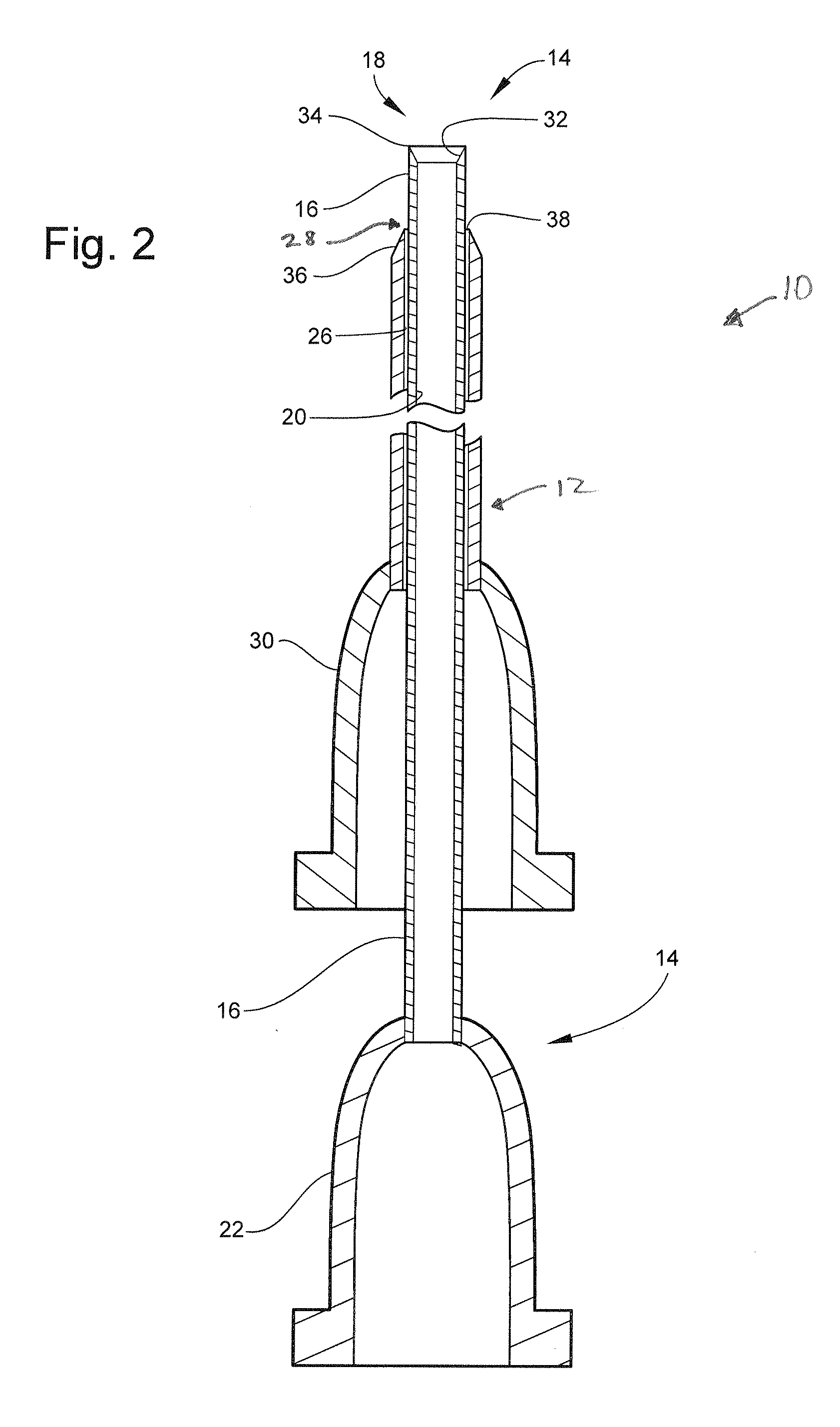Fine needle biopsy system and method of use
a biopsy system and needle technology, applied in the field of tissue biopsy needles, can solve the problems of limited application and effectiveness of options, difficult to harvest tissue samples from small organs or glands like lymph nodes or thyroid glands, and significant bleeding, so as to achieve the effect of minimizing tissue trauma
- Summary
- Abstract
- Description
- Claims
- Application Information
AI Technical Summary
Benefits of technology
Problems solved by technology
Method used
Image
Examples
Embodiment Construction
[0036]As noted, the present invention is a fine needle biopsy system that has improved delivery to the site of tissue biopsy. The biopsy system uses a cannula to deliver the needle to the tissue biopsy site. The needle is designed to more efficiently harvest or sample tissue. The device is capable of being positioned with minimal pain, tissue trauma, and bleeding. The harvesting of the tissue is capable of adequate sample size without unnecessary tissue damage.
[0037]With reference to FIG. 1, the fine needle biopsy system 10 includes a cannula 12 and a needle 14. Also shown are a cutaway view in FIG. 2 and an enlarged distal end view in FIG. 3. The cannula 12 of one embodiment has a grip that comprises a luer fitting 30 and a tubular cannula shaft 24 that defines the cannula lumen 26.
[0038]The cannula tip 28 has an outer bevel 36 that causes the tip 28 of the cannula 12 to form a cutting edge 38 on the inside surface of the cannula 12 which forms a generally frusto-conical shape. An ...
PUM
 Login to View More
Login to View More Abstract
Description
Claims
Application Information
 Login to View More
Login to View More - R&D
- Intellectual Property
- Life Sciences
- Materials
- Tech Scout
- Unparalleled Data Quality
- Higher Quality Content
- 60% Fewer Hallucinations
Browse by: Latest US Patents, China's latest patents, Technical Efficacy Thesaurus, Application Domain, Technology Topic, Popular Technical Reports.
© 2025 PatSnap. All rights reserved.Legal|Privacy policy|Modern Slavery Act Transparency Statement|Sitemap|About US| Contact US: help@patsnap.com



